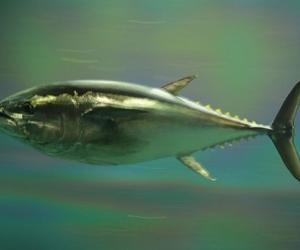August 14, 2014 – Since the Industrial Revolution humans have altered the chemistry of both air and ocean. New global measurements, not computer models, are painting a disturbing picture. Mercury has tripled in the world’s oceans. The report appears in August 6th online edition of Nature.
The mercury inventory was gathered by several oceanographic expeditions from the Atlantic, Pacific, Antarctic and Arctic Oceans. Measurements were obtained throughout the water column in these locations and showed variation in concentration both by location and depth. Two-thirds of the mercury present is found in water of less than 1,000 meters (3,300 feet) in depth.
The proximity to surface waters is a good clue as to how the mercury gets into the ocean and we are the offenders. Yes, there are natural sources of mercury. These include volcanoes and some minerals in which mercury is present. But the increases in concentration are wholly human created and the major sources include mining and the burning of fossil fuels.
Mercury would be even more concentrated in coastal areas if it weren’t for ocean currents and wind which help to disperse it to some degree. That may be the saving grace in this story because deeper water sequesters the chemical. But marine geo-chemists believe that sequestering capability will soon come to an end as humans put an equal amount of mercury to that of the last 150 years in the next 50.
The problem of mercury is one well understood by the scientists and the fishing industry. Mercury concentrations in large game fish like marlin, swordfish and tuna make them less desirable as a food source. People are cautioned to eat these large game fish no more than once in awhile. That’s because as an example, the average tuna contains levels of mercury 10 million times higher than the water in which they swim.
Sea and freshwater fowl who derive much of their diet from fish are also contaminated by high levels of mercury. The impact it has on them includes reduced reproductive rates and birth defects.
What does it do to us? For children it effects brain development leading to lower IQs and other cognitive deficits. Mercury toxicity in adult humans can lead to headaches, insomnia, tremors, memory loss, depression, tingling in the hands and feet and many more central nervous system related conditions. Minimata disease, named after Minamata City in Japan, was first identified as assoociated with mercury contamination in 1956. The residents of that city ate fish and shellfish from the bay where wastewater discharge from a chemical plant contained high volumes of methylmercury {MeHg). The population exhibited cognitive, sensory and and vision loss. Children born to mothers exposed to the wastewater presented as having mercury poisoning. More than 2,200 citizens of Minimata City were afflicted.
Mercury never breaks down. It just continues to build up but if we humans can reduce our output we can at least control One good thing coming out of the report. Because mercury is not evenly distributed throughout the ocean there is still the opportunity for humans to put less of it into the environment.
So don’t tell me – you had a tuna sandwich for lunch today?













